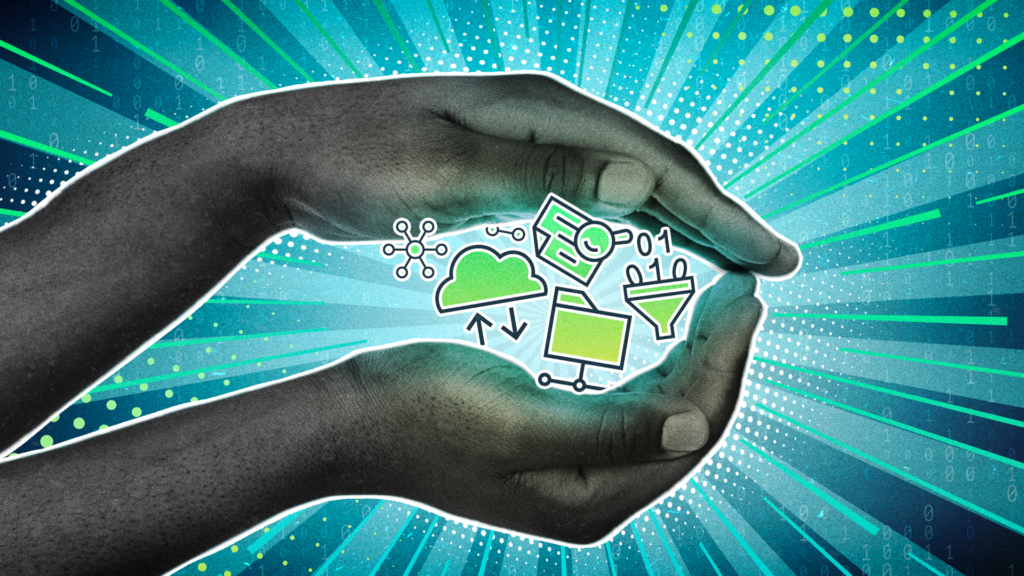From CES 2023 to Twitter, data clean rooms are big news and brand marketers may have a promising cookie alternative.
Cookies will be history by 2024, per Google. That may make new campaign ideation and audience segmentation challenging in the near future. Fortunately for marketers, data clean rooms may offer a safety net as they develop campaigns requiring deep insights drawn from first-party data.
“Unless there is a major change to how data is handled, less and less data will be available in the industry, particularly due the decline of the 3rd party cookie and device identifiers like IDFA,” the IAB Tech Lab wrote in a 2022 blog post. “ As a result, marketers will struggle to create personalized advertising, optimize campaigns, and attribute outcomes.”
The IAB believes that the demise of the cookie may have wide-reaching effects on consumers and publishers as well. “Consumers will receive less personalized and relevant ads, the post states. “Publishers may suffer decreased advertising income potentially forcing more subscription models and creating a move to a less open internet.”
According to Angela Eng, IAB VP of measurement, addressability & data center, this change has been a long time coming.
“Over the last five years, we’ve moved in a direction where privacy regulations and consumer privacy require us to rethink the way the advertising ecosystem collects and uses data to target, measure, and optimize,” Eng stated. “Advertisers are looking for alternative solutions beyond the current third-party cookie and moving towards privacy-preserving solutions such as CDP, Clean Room, and CMPS.”
How Data Clean Rooms Work
From social platform information to customer purchasing histories, a data clean room offers a secure environment where data can be analyzed and shared only with authorized individuals. Because all actions taken within the clean room are tracked and auditable, compliance issues can become less of a concern when campaigns and corresponding customer data inflows scale.
According to the IAB, a data clean room can be described as intermediary software that enables two parties to pool their data securely.
“Anonymisation is configured into the design: any personally identifiable information, such as email addresses, is encrypted, and access is only granted to those involved in a partnership,” reads a recent post from IAB Europe.
“Data clean rooms are a secure, privacy-friendly way to help brands get a clearer and more detailed picture of their media performance, with insights that can help determine reach, frequency, and attribution metrics.“
The IAB described three types of clean rooms relevant for marketers in a recent post:
- Single-party centralized clean room: data from one party goes in and is analyzed in relation to other data sets.
- Multi-party centralized clean room: data from multiple partners both inside and outside of an organization are aggregated
- Decentralized/agnostic clean room: data is connected in an independent, trusted environment. No one party has more privileges than another, and the data is not linked, thereby reducing the risk of data leakage
The IAB Tech Lab has stated that the use of a data clean room will likely be a central part of a future-focused data and privacy strategy for brands, marketers and publishers, but there is a caveat.
“Data clean rooms are not a silver bullet,” the post reads. “Ultimately, the data clean room is a piece of technology that cannot solve all privacy needs but rather works as part of a system of technologies and business needs.”
How Data Clean Rooms Can Support Marketers
For brand marketers, a data clean room offers several potential benefits when implemented with other appropriate Privacy Enhancing Technologies (PETs). One of the main advantages of a data clean room is the ability to gain a deeper understanding of first-party audience data by looking at contextual insights from multiple data sources in a General Data Protection Regulation (GDPR) or California Consumer Privacy Act (CCPA) compliant environment.
Another advantage of a data clean room for brand marketers is the ability to collaborate with partners and third-party vendors, such as research firms or data analytics companies, without exposing sensitive data to potential breaches or misuse.
Here are several ways brands, marketers, and publishers can leverage data clean rooms to support marketing or branding goals:
- Audience segmentation: By analyzing customer data in a clean room, marketers can gain a deeper understanding of their target audiences, including demographics, behavior patterns and preferences. This can help marketers segment their audiences more effectively and tailor their messaging and campaigns to specific groups.
- Performance analysis: A clean room can also be used to analyze past campaigns’ performance and identify improvement areas. For example, marketers can analyze data on website traffic, social media engagement and sales to understand which campaigns were most successful and which were not.
- Predictive modeling: Clean room data can also be used to create predictive models that can help marketers identify future trends and opportunities. For example, by analyzing historical data on consumer behavior, marketers can build models that can predict which products or services will be in demand in the future and which segments of their audience are most likely to respond to certain types of messaging.
- Fraud detection: A clean room’s multi-source data can be used to verify the accuracy of data collected from third-party sources, such as cookies or mobile device IDs. Marketers can also identify anomalies that may indicate fraudulent activity, such as bot traffic or click fraud.
For Eng, navigating a cookie-less future, even using tools like data clean rooms, is highly dependent on marketers having access to the right data in the first place.
”Investing in deterministic first-party datasets (data from logged-in, “known” audiences) remains vital,” Eng stated.“ Yet, in most instances, this only represents about 20 percent of potential consumers. Marketers need proven, probabilistic solutions to target and measure the 80 percent of consumers who are not part of their first-party data.”
